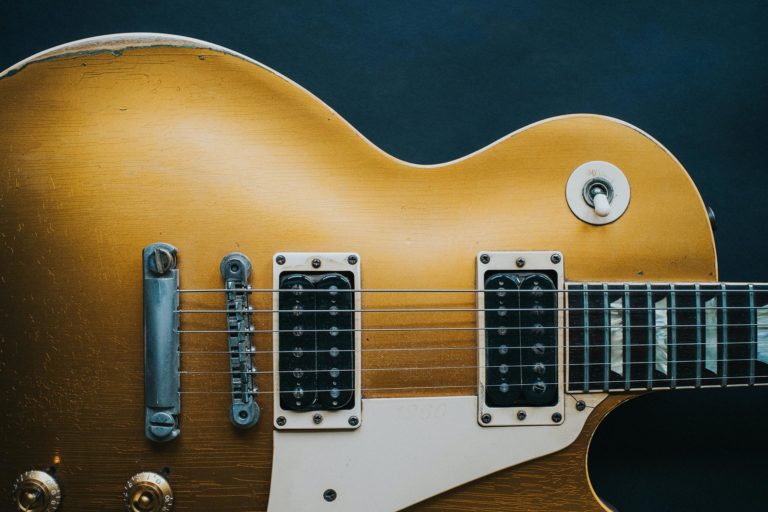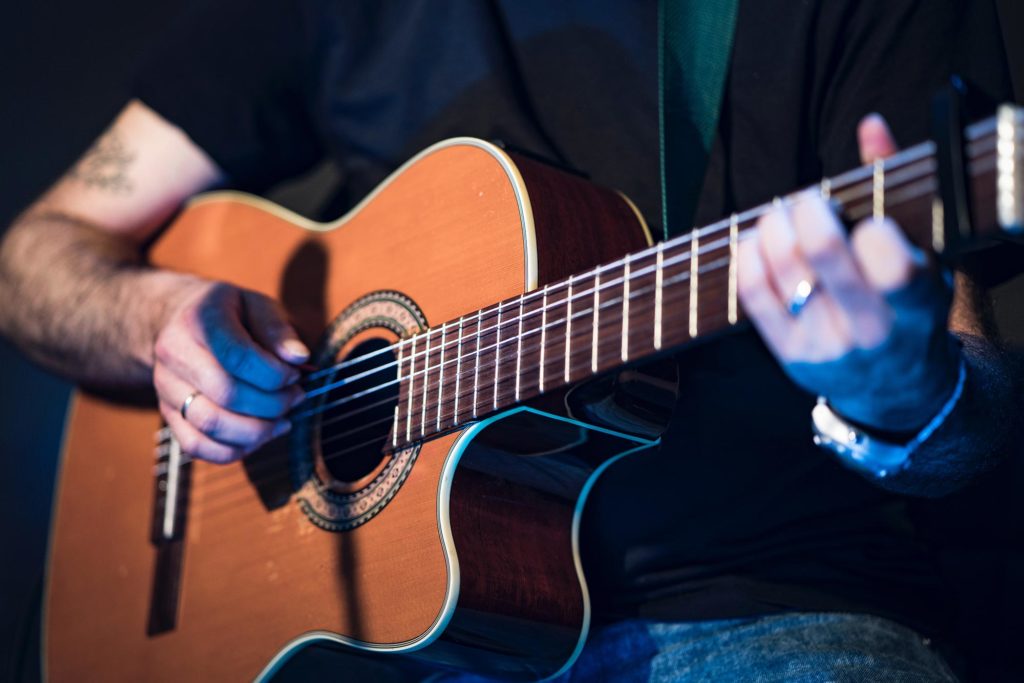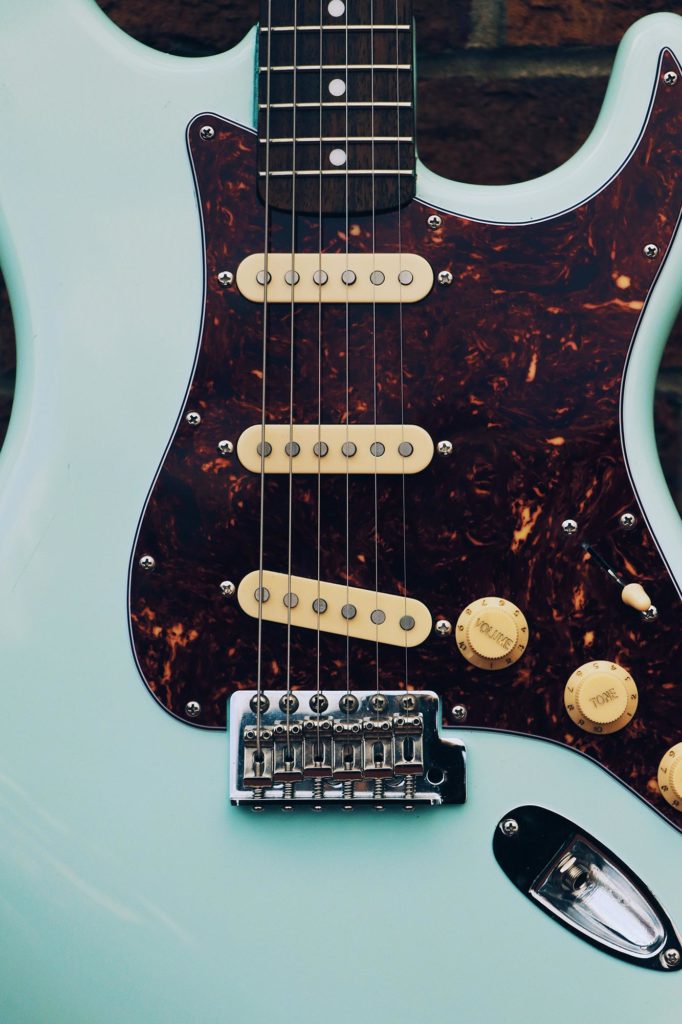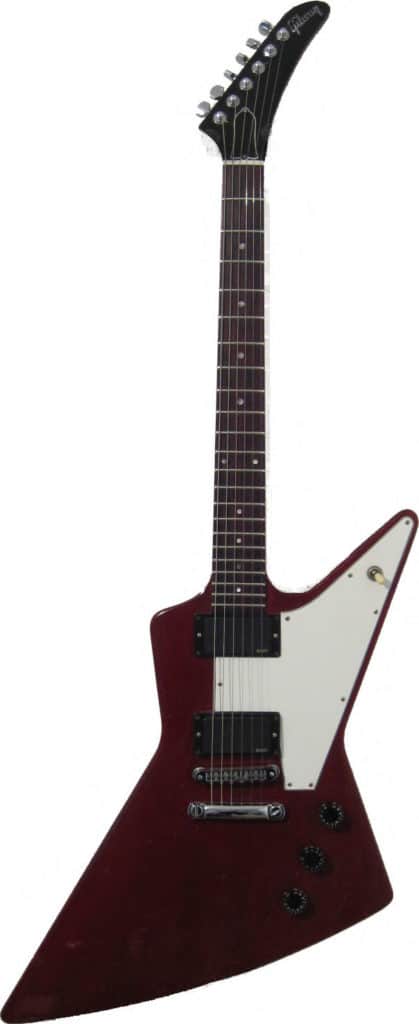Guitar River is reader-supported. We may earn a commission when you make a purchase using the links on our site.
Learn more.
Electric Guitar Shapes Explained

When thinking back on famous guitar players, and the guitars they played, I was struck by the variety of shapes that electric guitars come in. Granted, most electric guitars have a relatively standard shape, but there are a few out there that are quite unusual and sometimes bizarre. It got me thinking, just why are electric guitars shaped the way they are?
Electric guitars have their unique shape due to a combination of tradition, ergonomics, and aesthetics. The guitar shape stems from traditional instrument production of acoustic guitars, and even other stringed instruments. Ergonomics come into play to create a comfortable playing experience for musicians. From there, the shape of the electric guitar is refined for aesthetic reasons, producing the variety of shapes that we see today.
We need to take a brief look back at history and the origins of the guitar. From there, we need to consider the influence of music genres, and how that has impacted both the ergonomics and aesthetics of guitars. Can you think of the weirdest guitar shape and when it occurred? I know I have a strong suspicion that it had something to do with hard rock and heavy metal in the 1980s.
First, a Little History
The origins of the modern guitar date back to the 16th century, likely originating in Spain. Early guitars only had four sets of strings, and were tuned to C, F, A, and D. Guitars of this era were related to similar instruments such as the vihuela, and the lute.
Going back even further, there is a stone carving of a person playing a guitar-like instrument dating back to over 3,000 years ago. This seems to be the earliest known representation of a guitar. So your modern electric guitar has some history behind it!
A guitar is classified as a chordophone, which is an instrument that makes a tone through vibrating a string stretched between two points. Other chordophones include the harp, lute, oud, and even the piano.

For the simplest stringed instrument on the planet, you can investigate the one-stringed musical bow, such as the berimbau used in the Brazilian martial art, capoeira.
Humans decided to stretch strings, made from animal or vegetable material between two points, and over an empty cavity such as a hollow gourd. In doing so they realized they could produce a tone. Obviously, this was a simple way to make music but it can be considered the origin of the guitar.
Over time, we moved from single-stringed instruments, to ouds and lutes, and eventually to what we know as the modern guitar. The shape of the guitar has its origins in the lute and similar instruments. The guitar body shape has evolved to factor in playability and ergonomics, which we will talk about next.
Ergonomics
If you consider a typical acoustic guitar, you’ll notice a rounded body shape. The curves allow for comfort when playing while sitting down, and also impact the resonance of the sound.
Like a person, the classical and acoustic guitar body has shoulders, a waist, and hips. This is an ergonomic shape that functions well when playing in a seated position–the traditional playing position of a classical musician.
The waist of the guitar rests on one leg, keeping the instrument in place and creating a comfortable position for the musician’s hands.
These ergonomic features are continued and refined in the traditional electric guitar body shape, especially with the advent of the Fender Stratocaster.
Acoustics
The size and shape of the acoustic guitar allows the sound to resonate within the body of the guitar. Without the empty body cavity, you would not have a full guitar sound.
You might have noticed that acoustic guitar bodies vary in size and shape. Some have a more pronounced waist such as auditorium guitars. The shape will affect the tone of the instrument, and different shapes will have different tonal characteristics.

Other acoustic guitar bodies are much larger. Consider a dreadnought guitar versus a parlor guitar. The smaller parlor guitar is going to produce a quieter sound than a dreadnought guitar and is more appropriate for smaller rooms. Hence the name, parlor guitar.
The above applies to other stringed instruments as well. If you think of a cello, it has a large and thick body creating a big space for the sound to resonate. Instead of a central sound hole, cellos, violins, and other bowed instruments have an f-hole on the sides.
Going Electric
Electric guitars were created during the 1930s and came to prominence in the 1950s and 60s. Early electric guitars were created from hollow archtop acoustic guitar bodies.
Instead of the center soundhole, the guitars used side f-holes in addition to the electric guitar pickups. This body shape was a continuation and evolution of the traditional acoustic guitar shape.
In 1936, Gibson introduced the ES-150. The ES stood for Electric Spanish, a reference to the first prototype and production electric guitars in the 1930s, as well as the traditional Spanish-style acoustic guitar body. The 150 referred to the cost.
These early guitars were essentially traditional acoustic guitars converted to electric with a single coil pickup, archtop body, pickguard, fixed bridge, and f-holes. The larger archtop body created more sound, but introduced the problem of noisy feedback. Solid-body guitars were designed in part to fix this issue.
Solid-body Electrics
Fender introduced the Broadcaster (now known as the Telecaster) in the 1940s and the Stratocaster in the 1950s, both of which are solid body guitars. There are no sound holes or body cavities for the sound to resonate. Instead, the tone is influenced by the characteristics of the wood and construction, and the guitar pickups are responsible for reproducing the sound.
The guitar bodies at this point still reflect the overall guitar shape we are familiar with. However, since these are solid body guitars and have no need for a thick body cavity or any sound holes, designers and manufactures now have a bit more freedom.

Both the Telecaster and Stratocaster hint at the traditional guitar shape, but add their own unique and iconic twist. The Tele features a bold solid wood shape with a single cutaway, and traditionally two single coil pickups. The strings are mounted through the body with a fixed bridge.
The Strat introduces a double cutaway and ergonomic contours for playability. The iconic Strat also sports a tremolo at the bridge, an additional middle pickup and tone control, and a five-way pickup selector switch.
At this point, we are no longer bound to the acoustic guitar design. There is room for additional innovation and boundary-pushing aesthetics.
Aesthetics
A solid body electric guitar does not have the vibration of the string resonating in an empty body cavity to produce sound. However, the materials of the guitar do impact the tonal characteristics of the guitar.
But the body could be a rectangular block of wood and sound more or less the same. A wooden rectangle would not be very comfortable when playing, and would arguably not look that great. Although Steinberger does produce very minimal guitars, and that aesthetic appeals to some.
If you think of the typical Strat, it’s curved in a way to enhance comfort when playing. The contour on the back of the guitar, the forearm angle at the base of the body, and the double cutaway all help create a guitar that feels great to play. The contours contribute to an aesthetically pleasing shape as well.

Guitar manufacturers also experimented with unusual shapes. Gibson introduced the Explorer in 1958. It’s unusual winged body style did not catch on, and production stopped in 1963. It was later reintroduced in 1976 and experienced renewed interest with rock and heavy metal players in the 80s.
Along with the Explorer, Gibson also released the Flying V in 1958. Like the Explorer, it did not sell well initially and was discontinued in 1959. As with the Explorer, the V-shaped guitar was later reissued and gained popularity with rock and metal players.
These unique electric guitar body shapes were ahead of their time, and were underappreciated at first. Perhaps the departure from the traditional guitar shape was too shocking at the time.
The Future
Coinciding with the popularity of rock music and heavy metal in the 70s and the 80s, companies such as Hamer, ESP, B.C. Rich, and Kramer introduced angular body shapes. Some of these were clearly based on the Explorer and Flying V.
Guitar body shapes such as the B.C. Rich Warlock are in a class of their own. These extreme shapes parallel the extreme music being played on them. The shape is purely driven by aesthetics, though there is still the hint of the traditional guitar body shape.
Along with body styles, guitar manufacturers experimented with construction materials as well. In the 1970s and early 80s, Kramer created guitars with aluminum necks and a forked headstock design. Kramer even built a Gene Simmons guitar model that looked just like an axe!
Today, we still have an exploration of new shapes and guitar innovations. Strandberg comes to mind with its smooth contours, light weight, headless guitars, and true-tempered fret models.
Even so, many of these shapes are essentially variations of the original Strat. And the Strat itself is a logical evolution of the traditional acoustic guitar body. It’s hard to improve on perfection.
And if you really want a rectangle, you can make a cigar box guitar.



